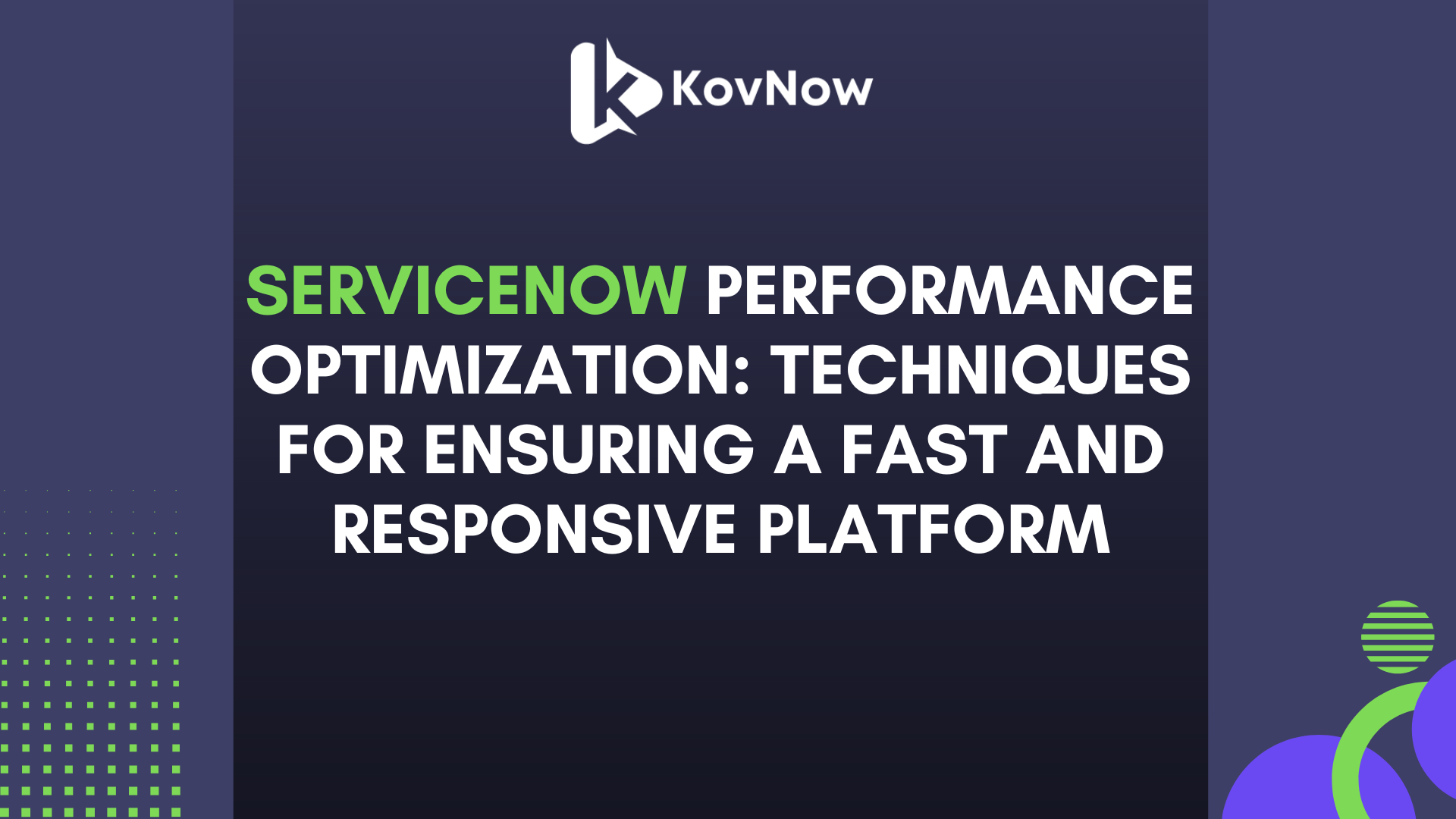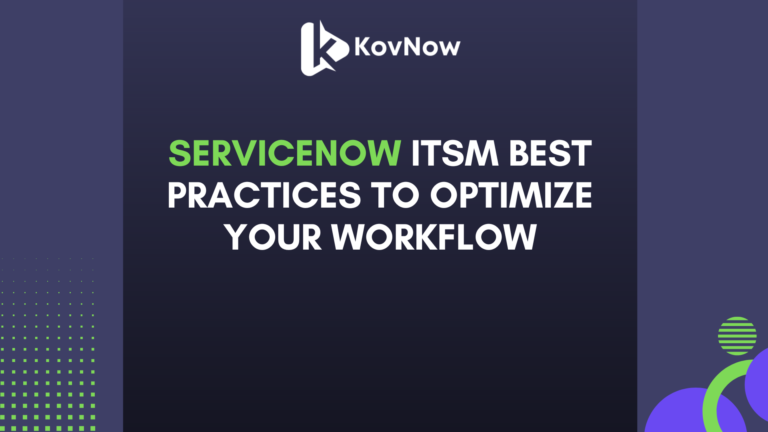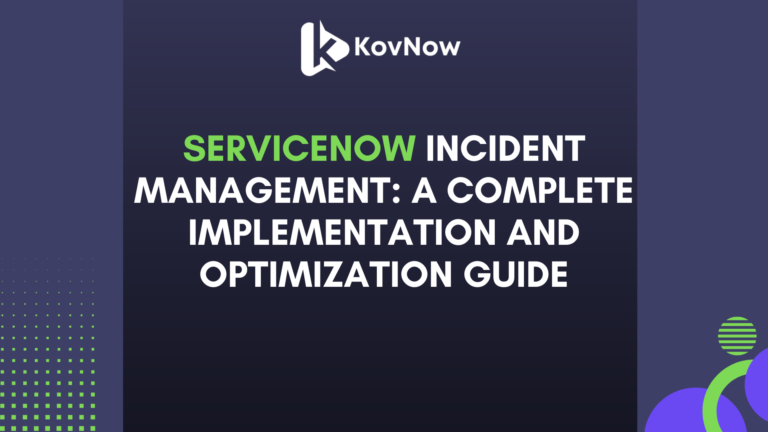The speed and responsiveness of enterprise platforms are critical determinants of productivity and user satisfaction. For organizations heavily invested in ServiceNow, a slow or laggy instance can severely hinder operational efficiency, frustrate users, and ultimately impede business agility. Addressing ServiceNow performance optimization is not merely a technical nicety; it’s a strategic imperative for maximizing the platform’s value. This post delves into the essential techniques and considerations that IT Directors, VPs of Infrastructure, ITSM Leads, and CXOs should understand to ensure their ServiceNow environment operates at peak performance, delivering a seamless and efficient user experience.
The High Stakes of Suboptimal ServiceNow Performance
A ServiceNow platform that suffers from performance issues can create a ripple effect of negative consequences across the organization. Understanding these stakes underscores the importance of proactive ServiceNow performance optimization:
- Reduced User Productivity: Slow load times, unresponsive forms, and lengthy processing can significantly impact user productivity, leading to wasted time and frustration across various departments.
- Increased Operational Costs: Inefficient processes and delays caused by poor performance can translate into higher operational costs, as tasks take longer to complete and more resources are consumed.
- Lower User Adoption: If users find the platform slow and cumbersome, they may be less likely to adopt new modules or features, limiting the return on your ServiceNow investment.
- Damaged Reputation (Internal & External): Poor performance can negatively impact the perception of IT and the overall effectiveness of the digital transformation initiatives reliant on ServiceNow.
- Challenges with Scalability: A poorly optimized instance may struggle to handle increasing data volumes and user loads, hindering future scalability and growth.
- Difficulty in Identifying Root Causes: Performance issues can sometimes mask underlying configuration or architectural problems, making it harder to diagnose and resolve critical incidents.
Therefore, a proactive and continuous focus on ServiceNow performance optimization is essential for maintaining a healthy and high-value platform.
Key Techniques for Effective ServiceNow Performance Optimization
Achieving a fast and responsive ServiceNow platform requires a multi-faceted approach, addressing various aspects of the system’s configuration and usage. Here are crucial techniques to consider:
1. Efficient Client-Side Performance
The user experience is heavily influenced by client-side performance. Optimizing how data is presented and manipulated in the browser is critical:
- Minimize DOM Manipulation: Excessive or inefficient Document Object Model (DOM) manipulation can lead to slow rendering. Ensure scripts are optimized and only update necessary elements.
- Optimize Client Scripts and UI Policies: Review and optimize client scripts and UI policies for efficiency. Avoid synchronous calls and ensure they execute only when necessary.
- Use Asynchronous GlideAjax Calls: When fetching data from the server, utilize asynchronous GlideAjax calls to prevent blocking the user interface.
- Optimize Form Layouts: Design clean and efficient form layouts, displaying only essential fields and using appropriate UI controls. Avoid overly complex or lengthy forms.
- Minimize Image Sizes: Optimize images used within the platform to reduce loading times.
- Leverage Browser Caching: Ensure appropriate browser caching is configured to reduce the need to reload static resources.
2. Optimized Server-Side Performance
The performance of the ServiceNow server infrastructure and the efficiency of server-side scripts are equally vital:
- Efficient GlideScript: Write efficient and well-structured GlideScript, adhering to best practices. Avoid unnecessary loops, inefficient queries, and redundant operations.
- Optimize Database Queries: Ensure all GlideRecord queries are properly indexed and selective, retrieving only the necessary data. Utilize
addQuery(),addEncodedQuery(), andsetLimit()effectively. - Background Jobs and Scheduled Scripts: Offload long-running or resource-intensive tasks to background jobs or scheduled scripts to avoid impacting real-time user interactions.
- Control Workflow Execution: Design efficient workflows with minimal steps and avoid unnecessary synchronous activities. Consider using Run Script activities judiciously.
- Optimize Inbound Email Processing: Ensure efficient parsing and processing of inbound emails to prevent performance bottlenecks.
- Manage Attachment Sizes: Implement policies to manage the size and number of attachments to prevent database bloat and performance degradation.
3. Robust Database Management
The ServiceNow database is the heart of the platform. Proper management is crucial for optimal performance:
- Regular Indexing: Ensure appropriate indexes are in place on frequently queried fields to speed up data retrieval. Regularly review and optimize indexes.
- Table Rotation and Archiving: Implement table rotation and archiving strategies for large transactional tables to manage database size and improve query performance.
- Database Cleanup: Regularly perform database cleanup tasks to remove obsolete or unnecessary data.
- Monitor Database Performance: Utilize ServiceNow’s performance monitoring tools to identify and address database-related bottlenecks.
4. Efficient Integration Management
Poorly designed or inefficient integrations can significantly impact ServiceNow performance:
- Optimize API Calls: Design efficient API calls, retrieving only necessary data and utilizing batch processing where appropriate.
- Asynchronous Integrations: Favor asynchronous integration patterns for non-real-time data exchange to avoid blocking ServiceNow processes.
- Error Handling and Logging: Implement robust error handling and logging mechanisms for integrations to quickly identify and resolve issues.
- Monitor Integration Performance: Regularly monitor the performance of integrations to identify and address potential bottlenecks.
5. Proactive Monitoring and Analysis
Continuous monitoring and analysis are essential for identifying and addressing performance issues before they significantly impact users:
- Utilize ServiceNow Performance Analytics: Leverage Performance Analytics to track key performance indicators (KPIs) and identify trends.
- Monitor System Logs: Regularly review system logs for errors and performance-related warnings.
- Use the Stats.do Page: Understand and utilize the
stats.dopage for real-time performance monitoring. - Leverage Third-Party Monitoring Tools: Consider using third-party monitoring tools for deeper insights into system performance.
- Establish Performance Baselines: Establish performance baselines to identify deviations and potential issues early.
6. Regular Platform Audits and Health Checks
Periodic audits and health checks can proactively identify potential performance bottlenecks and areas for improvement:
- Review System Configurations: Regularly review system configurations to ensure they align with best practices.
- Analyze Script Efficiency: Conduct periodic reviews of custom scripts to identify and optimize inefficient code.
- Assess Integration Performance: Regularly assess the performance and efficiency of all integrations.
- Follow ServiceNow Best Practices: Adhere to ServiceNow’s recommended best practices for platform configuration and development.
ServiceNow’s documentation on performance best practices provides comprehensive guidance: https://docs.servicenow.com/bundle/quebec-platform-performance/page/performance/performance-home/performance-home-page.html
The Importance of Specialized Expertise in ServiceNow Performance Optimization
Achieving optimal ServiceNow performance optimization often requires a deep understanding of the platform’s architecture, scripting capabilities, database structure, and integration mechanisms. Identifying and implementing the right techniques can be complex and time-consuming, often necessitating specialized expertise. Consulting firms that can provide clients with professionals skilled in performance analysis and optimization offer significant value.
Conclusion: Ensuring a High-Performing ServiceNow Platform for Sustained Success
A fast and responsive ServiceNow platform is not just a desirable outcome; it’s a fundamental requirement for maximizing productivity, user satisfaction, and the overall return on investment. By understanding and implementing these key ServiceNow performance optimization techniques, organizations can ensure their platform operates efficiently and scales effectively to meet future demands. Proactive attention to performance is a continuous journey, requiring ongoing monitoring, analysis, and a commitment to best practices. Investing in the expertise to optimize your ServiceNow environment is a strategic move that pays dividends in the long run, ensuring a seamless and efficient digital workflow across your enterprise.
Check our blog on ServiceNow Scripting Best Practices.







